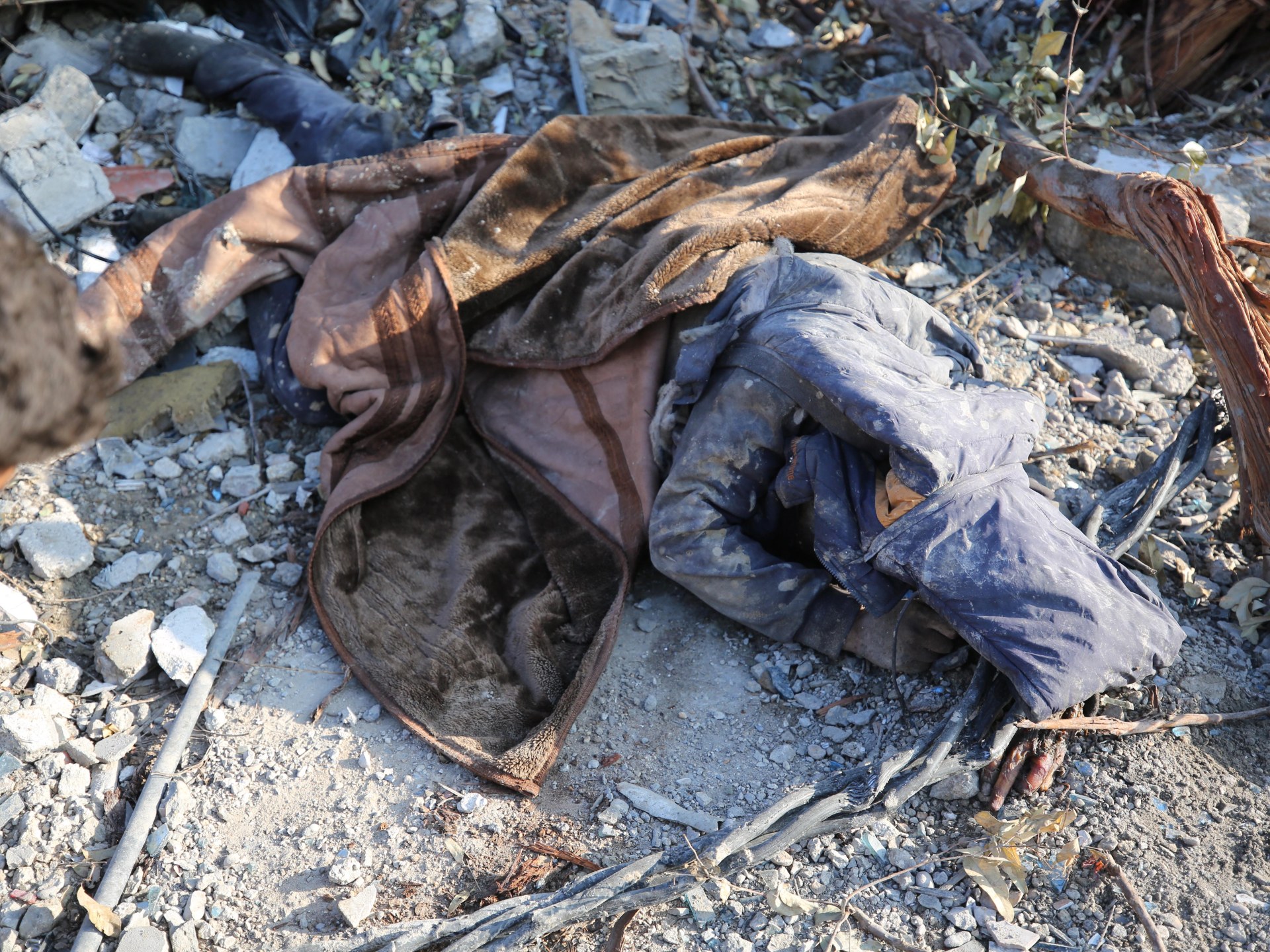The body of a Palestinian martyr amid demolished buildings in the Al-Rimal neighborhood in Gaza City (Anatolia)
Today, Saturday, Palestinians recovered a number of bodies of martyrs dumped in the streets, hours after a partial Israeli withdrawal from areas west of Gaza City.
Local sources reported that a number of the bodies of the martyrs killed by the Israeli army were transferred to the Baptist Hospital in the city, especially from the areas that witnessed a partial withdrawal of the army, namely the universities, the battalion, and the industrial junction.
Some of these bodies were transported by "primitive methods on the back of horse-drawn carts."
Video scenes also documented the extent of the extensive bulldozing operations carried out by the Israeli army inside the main streets and intersections in the universities and industry area in the Al-Rimal neighborhood in Gaza City.
According to Anadolu Agency's correspondent, a number of martyrs were recovered from centers sheltering displaced people that were subjected to direct Israeli targeting.
Eyewitnesses reported that a number of wounded people were in the Al-Katiba area and appealed for their evacuation to receive treatment, as they were unable to be transported due to their health conditions.
Statistics were not immediately issued by the Palestinian Ministry of Health regarding the number of martyrs found after the Israeli withdrawal.
This partial withdrawal also revealed widespread destruction of homes and infrastructure, and the burning of homes that had not been leveled.
Huge destruction
In the same context, video scenes showed the widespread devastation caused by the Israeli bombing and incursion into the Tal al-Hawa neighborhood in Gaza City over the past about two weeks.
The Israeli aircraft completely destroyed the Cairo residential tower. It is one of the most prominent towers in the neighborhood.
After about 15 days, the besieged residents left their homes and were surprised by the extent of the destruction, devastation, and bombing that the area, buildings, and residential homes were subjected to.
An eyewitness said: “Israeli quadcopter drones were shooting 4 times a day at inhabited and uninhabited houses, and we were taking shelter on the ground floor.”
An eyewitness from the area added: "The days were very difficult. We could not find food, and the conditions were very disturbing."
Families went out to the streets to collect wood and belongings to use in lighting fires to prepare food.
Scarcity of water and food
Another eyewitness spoke about the conditions of the siege of residents in the neighborhood: “We made a decision to stay in our homes with the Israeli army’s incursion, because the army targets residents as they go out and targets them on the streets. We stayed in our house despite the scarcity of water and food, and we put the equation of exit with the equation of death.”
He added: "When the Israeli army withdraws, we work to search for water and firewood to light a fire to prepare food for the children."
A girl who was trapped during the Israeli incursion said: “We were exposed to fire from Israeli drones and vehicles. We stayed inside the ground floor. My feeling was difficult because of the bombing. We lived through a siege for the first time, and after that we tried to secure food, and after that we entered into a second siege.”
Since mid-December, the army began gradually withdrawing from areas in the northern Gaza Governorate, followed at the beginning of last January by partial withdrawals from neighborhoods and areas in the Gaza Governorate.
From time to time, some areas in the Gaza and North governorates witness partial advances by Israeli vehicles as part of a maneuver during which the army carries out military operations and then withdraws again days later.
Israel continues its military aggression in various areas of the Gaza Strip as part of its ground attack that began last October 27.
Since the seventh of last October, Israel has been waging a devastating war on the Gaza Strip that has left tens of thousands of civilian victims, most of them children and women, in addition to an unprecedented humanitarian catastrophe and massive destruction of infrastructure, which led to Tel Aviv appearing before the International Court of Justice on charges of “ Genocide".
Source: Al Jazeera + Anatolia

